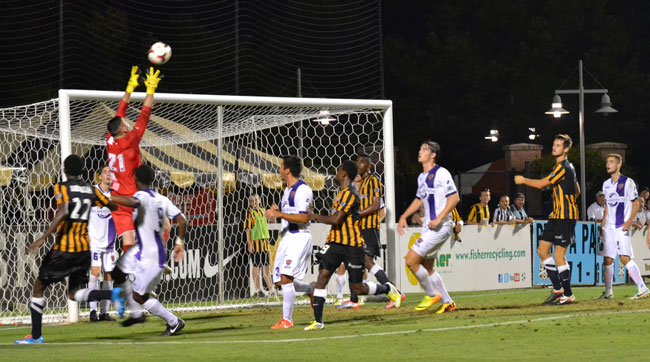Texas Residents Urged To Stay Safe Amid 111°F Heat Warning

Table of Contents
Texas is currently under a dangerous heat warning, with temperatures reaching a scorching 111°F in many areas. This extreme heat poses significant health risks, making it crucial for all Texas residents to take precautions to stay safe. This article outlines essential steps to protect yourself and your loved ones during this intense heat wave. We'll cover recognizing the dangers of extreme heat, staying safe during the heatwave, and responding to heat-related illnesses.
Recognizing the Dangers of Extreme Heat
Extreme heat can be deadly. Understanding the difference between heat exhaustion and heatstroke is vital for appropriate responses.
Heatstroke vs. Heat Exhaustion
Heat exhaustion and heatstroke are both serious heat-related illnesses, but heatstroke is a life-threatening medical emergency.
-
Heat Exhaustion: This is your body's warning sign. Symptoms include:
- Headache
- Dizziness
- Weakness
- Nausea
- Muscle cramps
- Heavy sweating
- Paleness
- Fast pulse
-
Heatstroke: This is a medical emergency requiring immediate attention. Symptoms include:
- High body temperature (above 103°F or 39.4°C)
- Confusion
- Seizures
- Loss of consciousness
- Red, hot, and dry skin (sweating may be absent)
- Rapid, weak pulse
- Rapid breathing
Vulnerable Populations
Certain groups are more susceptible to heat-related illnesses:
- Infants and young children: Their bodies regulate temperature less efficiently.
- Older adults: Their bodies may not adjust as well to temperature changes, and they may be on medications that increase heat sensitivity.
- People with chronic illnesses: Conditions like heart disease, diabetes, and kidney disease can worsen with heat exposure.
- People who are overweight or obese: Extra body fat can make it harder to cool down.
- Those working outdoors: Prolonged exposure to the sun increases risk significantly.
Staying Safe During Extreme Heat
Protecting yourself from the Texas heat requires a multi-pronged approach.
Hydration is Key
Staying properly hydrated is paramount. Drink plenty of water throughout the day, even before you feel thirsty.
- Recommended daily water intake: Varies based on activity level and individual needs, but aim for at least eight glasses.
- Signs of dehydration: Dark urine, headache, dizziness, fatigue.
- Electrolyte-rich drinks: Replenish essential salts lost through sweat. Consider sports drinks in moderation, but avoid sugary drinks which can dehydrate further. Electrolyte-rich foods include bananas, oranges, and coconut water.
Limit Outdoor Activities
Minimize your time outdoors during peak heat hours.
- Ideal times for outdoor activities: Early morning (before 10 am) and late evening (after 7 pm) are generally cooler.
- Strategies for staying cool outdoors: Take frequent breaks in shaded areas, wear light-colored, loose-fitting clothing, and use sunscreen with a high SPF.
- Appropriate clothing: Wear light-colored, loose-fitting clothing that allows for better air circulation and breathability.
Seek Cool Places
Air conditioning is the best protection against extreme heat.
- If air conditioning is unavailable: Seek refuge in public spaces like libraries, shopping malls, or designated cooling centers. Many cities operate cooling centers during heatwaves. Check your local government website for locations. (Links to city-specific resources would be inserted here if available.)
Responding to Heat-Related Illnesses
Knowing how to respond to heat exhaustion and heatstroke can save lives.
First Aid for Heat Exhaustion
If someone shows signs of heat exhaustion:
- Move them to a cool place.
- Loosen their clothing.
- Apply cool, wet cloths to their skin.
- Give them sips of water or an electrolyte drink.
- Monitor their condition closely. Seek medical attention if symptoms worsen or don't improve.
When to Seek Medical Attention
Call emergency services (911) immediately if someone exhibits signs of heatstroke, including:
- High body temperature (above 103°F or 39.4°C)
- Confusion or disorientation
- Seizures
- Loss of consciousness
This extreme heat wave in Texas demands vigilance and proactive measures. By understanding the risks associated with high temperatures, staying hydrated, limiting exposure to the sun, and knowing how to respond to heat-related illnesses, you can significantly reduce your risk. Remember to check on vulnerable neighbors and family members, and stay informed about weather updates. Stay safe during this Texas heat wave and prioritize your well-being. Remember to share these crucial heat safety tips with others to ensure everyone in Texas stays safe during this extreme heat. #TexasHeatWave #HeatSafety #StaySafeTexas

Featured Posts
-
 Djokovic Dominates Roland Garros Debut Gauff And Andreeva Victorious
May 30, 2025
Djokovic Dominates Roland Garros Debut Gauff And Andreeva Victorious
May 30, 2025 -
 Trump Administration Rejects 3 Billion Sunnova Energy Loan
May 30, 2025
Trump Administration Rejects 3 Billion Sunnova Energy Loan
May 30, 2025 -
 Guillermo Del Toros Cryptic Frankenstein Teaser Sparks Fan Debate
May 30, 2025
Guillermo Del Toros Cryptic Frankenstein Teaser Sparks Fan Debate
May 30, 2025 -
 Metallica Dublin Aviva Stadium June 2026 Two Night Weekend Announced
May 30, 2025
Metallica Dublin Aviva Stadium June 2026 Two Night Weekend Announced
May 30, 2025 -
 Kalinskayas Upset Charleston Open Quarterfinal Victory Over Keys
May 30, 2025
Kalinskayas Upset Charleston Open Quarterfinal Victory Over Keys
May 30, 2025
